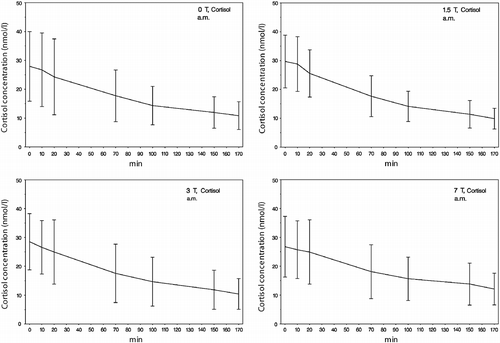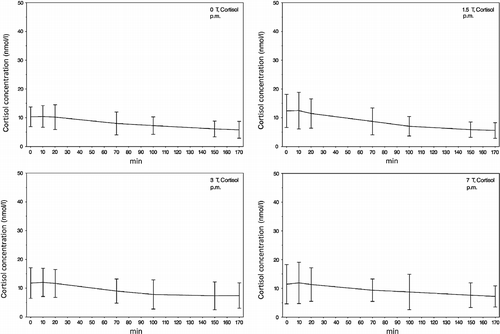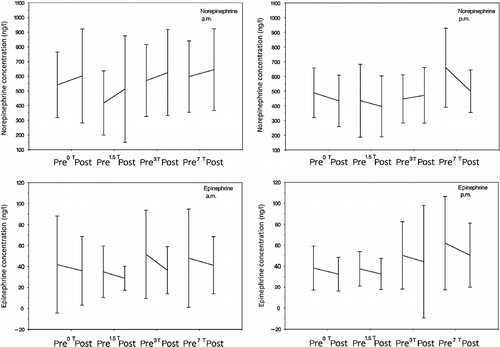Figures & data
Figure 1. A synopsis of the study protocol including the baseline visit and the sequence of events during the experimental procedure [beginning with the (1) cortisol sample followed by exposition to and then movement in static magnetic fields and ending with the (7) cortisol sample]. Each study participant took part in the experimental procedure in four different conditions of the magnetic field (0, 1.5, 3, 7 T); the order of the conditions was random.
![Figure 1. A synopsis of the study protocol including the baseline visit and the sequence of events during the experimental procedure [beginning with the (1) cortisol sample followed by exposition to and then movement in static magnetic fields and ending with the (7) cortisol sample]. Each study participant took part in the experimental procedure in four different conditions of the magnetic field (0, 1.5, 3, 7 T); the order of the conditions was random.](/cms/asset/a36a724c-4402-4ff0-8b0e-0b2d0b47b753/ists_a_708949_f0001_b.gif)
Figure 2. The am mean values of saliva cortisol concentrations (samples 1–7) during exposure to the different static magnetic field strengths (0, 1.5, 3 and 7 T). A decrease in the cortisol response from samples 1 to 7 in all fields can be seen, probably due to habituation of the participants to the experimental procedure. Error bars indicate SDs.

Figure 3. The pm mean values of saliva cortisol concentrations (samples 1–7) during exposure to the different static magnetic field strengths (0, 1.5, 3 and 7 T). A decrease of the cortisol response from samples 1 to 7 in all fields can be seen, probably due to habituation of the participants to the experimental procedure. Error bars indicate SDs.

Figure 4. Pre- and post-scan (T1 and T2) concentrations of the catecholamines norepinephrine and epinephrine in the four scanner conditions (0, 1.5, 3 and 7 T), separately for am and pm. The analysis of variance showed no significant main effect of ‘Δcatecholamine’ (Δ: pre- vs. post-scan differences) for norepinephrine and epinephrine within each field strength with the exception of norepinephrine concentrations during the 7 T experiments showing a pre-/post-level of significance p = 0.02. Error bars indicate SDs.

